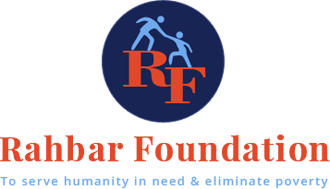Click here to see if your employer will match your donation.
Click to see if your company provides grants for volunteering.
Education And Development Of Muslims In India
Muslims, the largest minority community in the country, constituting 13.4 per cent of the population, are seriously lagging behind in terms of most of the human development indicators. While the perception of deprivation is widespread among Muslims, there has been no systematic effort since independence to analyze the condition of religious minorities in the country (Sachar Committee Report, 2006). Today, globally Muslims show the lowest literacy rate. http://www.islamfortoday.com/syed07.htm. A study, conducted by a committee comprising of the former pro-vice-chancellor of Aligarh Muslim University, K M Bahavuddin, among others, says, "We started with the impression that the situation of Muslims is comparatively better [in Kerala] but after collecting the data, we have come to the conclusion that their situation in Kerala has also been deteriorating in the last 20 years". http://www.indiatogather.org/2007/aur/edu-muslimedu.htm. Studies on human cognitive development have established that literacy enhances the critical faculties of individuals and enables them to reflect on the existential reality in which they have been placed (Katiyar, 2008).
Education not only provides profound knowledge and expertise but is supposed to play a broad spectrum role in developing social, cultural and moral values in an individual. It gives right direction to desires, emotions and outward behavior of individuals which reflects in the total personality (Dayal, 2008). Education is a vital factor in the social transformation of a society and its economic amelioration (Sachchidananda, 1977). Thus education of any community with no exception to Muslims will not only be helpful for their development but also for the development of the whole nation. Human capital theory suggests that just as a physical capital (machines) augments a person’s economic productivity, so human capital acquired through education improves the productivity of individuals. Studies on the Sources of economic growth demonstrate persuasively that education plays a major role as a factor in rise of output per worker. Most of the studies on educational status have been attempted with references to literacy by sex and residence. Gosal (1979); Mathur (1988); Gupta and Kothari (1990); Tripathi (1993). The growth and spread of literacy level, its distribution, causes and historical consequences have been studied in context of demographic, social and economic situation of Uttar Pradesh (Siddiqui, 1977 and Singh, 1979).
Some of the studies also dealt with such correlates as working population and the results of these were found to be inversely related to each other (Acharya, 1984; Singh, 1986 and Tripathi, 1993). The educational disparity in India is linked with socio-economic conditions (Raza and Aggarwal, 1986; Nuna, 1989 and Pcione, 1997). The interstate disparities in educational development in India have been analyzed by Tilak (1979), Redy (1985), Zaidi (1986), Mehta (1990) and Malhotra (1999). The study of inter-district inequalities in terms of literacy and educational development has been attempted by Saradamoni (1981) and Dash (1993). Educational attainment by gender has done by Doughal (2000). The relationship between education and work participation has been analysed by Siddiqui and Naseer (2004). The relationship between education and regional economic development has been examined by Dube and Mishra (1981), Chaudhary and Nair (1981) and Singh (1979). But perhaps there is no such macro level study which deals with the comparative study of educational status of Muslims in India. Therefore, in this paper an attempt has been made to visualize the educational status of Muslims and its relationship with their socio-economic development, taking India as a case study and state as a unit of analysis.
http://www.iosrjournals.org/iosr-jhss/papers/Vol13-issue2/J01328086.pdf?id=2293











